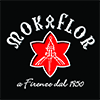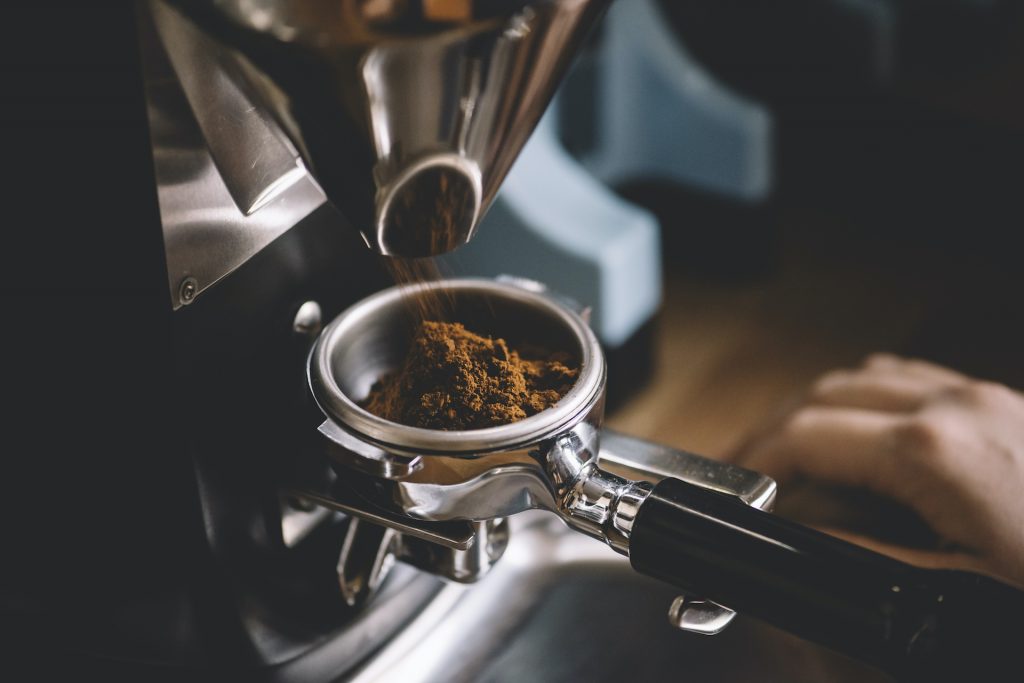There are quite a few factors which influence the taste of our coffee. Starting from the raw material, to the roasting procedure and the final extraction. In this last and very important step, one of the most difficult decision and action to take is: the grind size!
Unfortunately, this very important element of coffee extraction is still ignored by many baristas or coffee shop owners, who often rely on technical assistance companies to do this job for them.
But knowing and owning your coffee grind is the best way to daily check your coffee extraction and make sure that it’s at its best. Also, it will probably save you money and time!
Let’s start from the basics thanks to some very useful and important notions that we took from our partner ilcaffeeespressoitaliano.com, one of Italy’s most known coffee blogs!
WHY DO WE GRIND COFFEE?
- The aromatic substances that develop inside a coffee bean during roasting are trapped in their cellular structure. By breaking the bean, we can free the aromas and bring them into our extraction.
- By grinding, we increase the surface of coffee which is in contact with water, facilitating the extraction of aromatic substances. In fact, the finer the grind, the more coffee surface will be exposed to the extraction.
HOW DOES A COFFEE GRINDER WORK?
The coffee grinder is a very important piece of equipment of a coffee shop. It’s often even more important than the espresso machine.
Thanks to metal grinders (flat or conical), it allows you to cut the coffee bean into small particles. By adjusting the grind size, the distance between the grinders increases or decreases.
In fact, by bringing them closer, we will obtain a finer grain size. Instead, by moving them further apart the grain size will be larger.
Each coffee grinder manufacturer has their own system of adjusting the distance of the grinders manually or electronically.
Larger circles and higher numbers usually correspond to larger grain sizes. Various models feature arrows with Fine-Coarse indications to facilitate the barista in setting the grind.
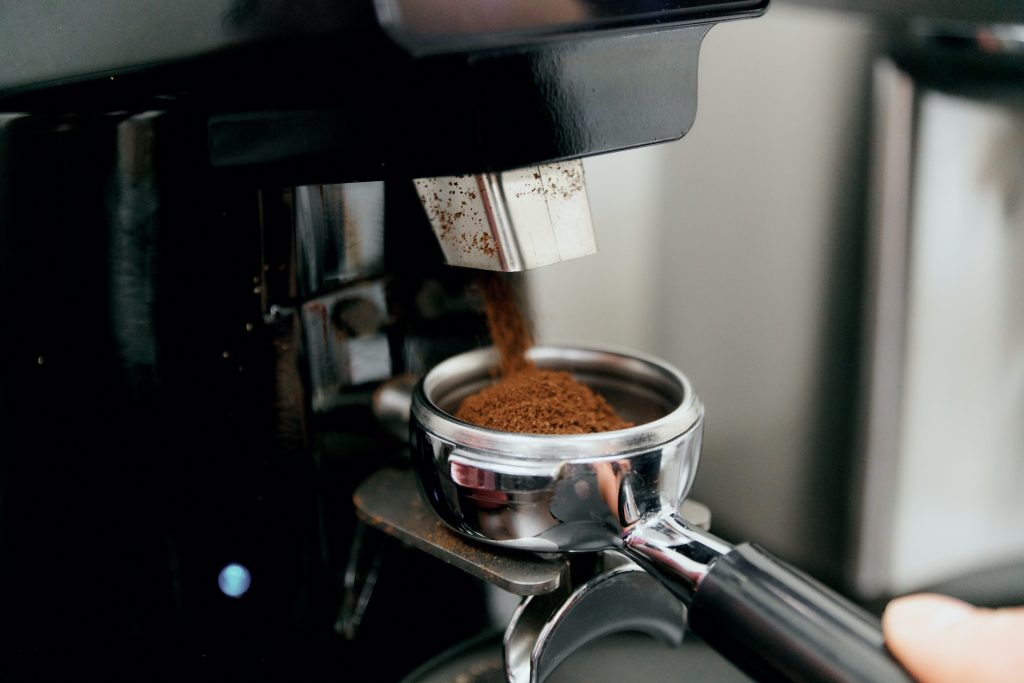
THE RECIPE FOR OUR ESPRESSO
Before starting to set up our coffee grinder, it is essential to have a clear understanding of the espresso recipe that we want to serve our customers. Also, we need to have a fundamental tool for the correct grinding adjustment at hand: the scale.
Let’s start with the dose of ground coffee we want to use. Usually the porta-filters that are mounted on espresso machines in Italy, can contain about 7 / 8 gr of coffee (14 / 16gr in the double filter).
If you want to use higher doses we will have to use larger filters, but we recommend to not go below the minimum recommended quantity for your espresso.
From this dose of coffee we will extract a 25ml of coffee in a time of 22 “/ 28” seconds.
This does not ensure that we have extracted the best possible espresso with our coffee yet, but at least these are the correct parameters to make sure we have a balanced drink in the cup.
In fact, with shorter contact times, we will have an under-extracted espresso with a very light crema that will tend to open very quickly, with a very low body and aroma. On the other hand, with a longer contact time, it is very likely that the water will extract unwanted substances in our espresso with bitter and astringent sensations, typical for over-extracted coffee.
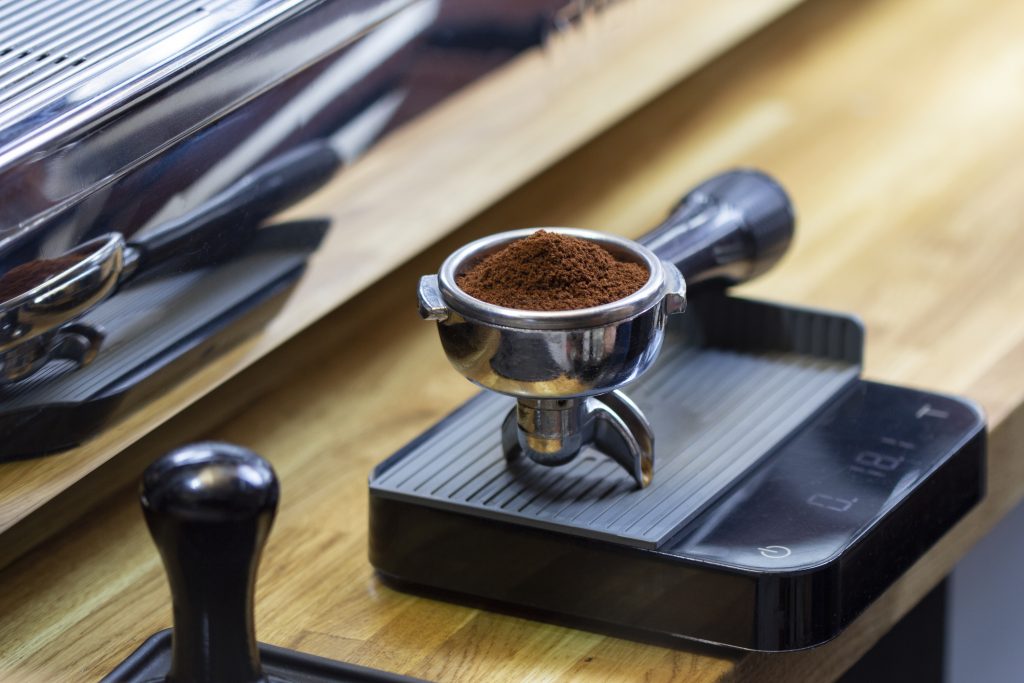
WEIGH AND TIME YOUR ESPRESSO EVERY MORNING
In our barista courses at Espresso Academy, we recommend using the scale to weigh the espresso in the cup during extraction. This allows you to be much more precise on the exact extracted amount.
Also a timer can be very useful (if your espresso machine is a bit more traditional and doesn’t have one!)
During normal working hours of a coffee shop it is difficult to weigh each extraction, but if we use the right parameters when we set the volumetric counters on our machine each morning, we will make sure to have the right extraction throughout the day.
The volumetric parameters of the machine can be accurate if the coffee dose remains unchanged, but small changes in dosage will also influence your cup. This is due to the absorption of water by the ground coffee. In fact, more coffee = less espresso in the cup and vice versa.
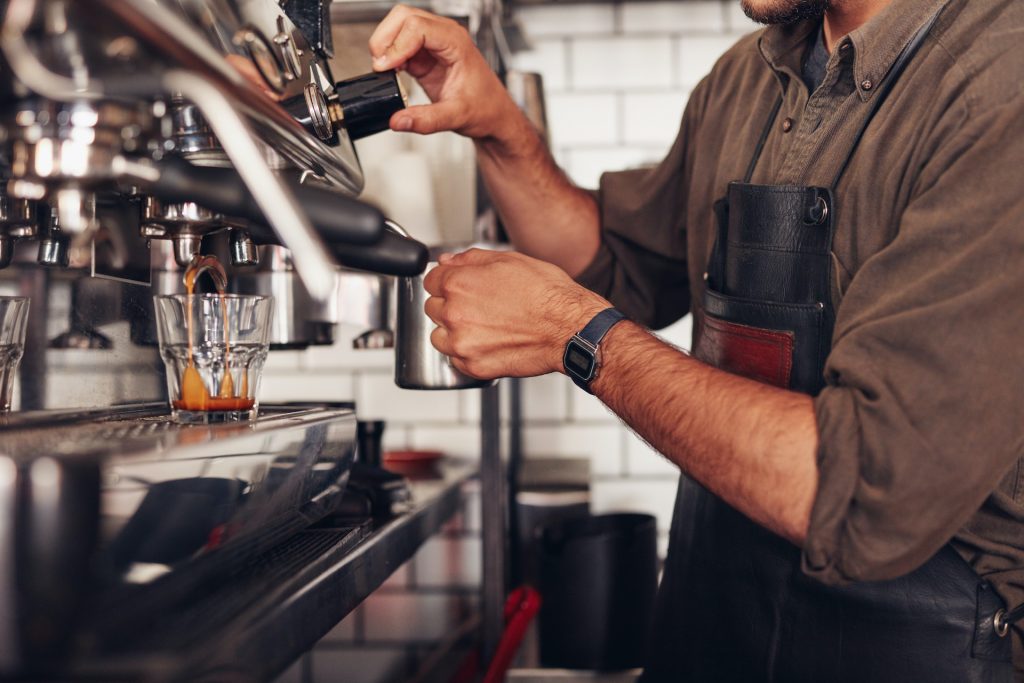
FINDING THE RIGHT GRIND SIZE
It is advisable to adjust the grind using the double espresso filter holder. In the morning, before you start making the first coffees, we recommend to grind a dose of 14/16 grams of coffee.
Dose it inside the filter holder until you reach the desired weight and try an extraction.
If this espresso extraction takes place in less than 22 seconds (under extracted espresso) we will have to adjust the grind to “finer” in order to slow down the extraction time. We herewith increase the contact time between water and ground coffee and allow the water to extract all the positive substances from our coffee.
If on the other hand, the extraction of the espresso takes place in more than 28 seconds (over-extracted espresso) we will have to adjust the grind settings to “larger” in order to speed up the extraction time. We therefore decrease the contact time between the water and ground coffee avoiding that the water extracts negative substances from our coffee.
Before changing the grind size, we should also always empty the grinder of any coffee residues. For this reason, during the settings, we recommend to grind only what is necessary for one dose.
We recommend to adjust the grinding every time we realize that our extractions no longer fall within the parameters of our recipe, which happens regularly during the day due to many variables that affect the roasted coffee. Not only the humidity of the air, but also the degassing time of the coffee in the hopper and the heating of the grinders at peak moments, can be variables which will influence the grinding and therefore your espresso extraction.
